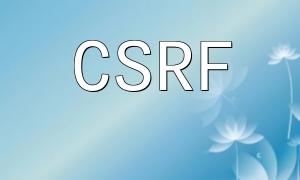Introduction
In web development, static page generation is an important optimization technique that can significantly improve page loading speed and user experience. By caching dynamic content as static HTML files, server load is reduced, which helps improve page speed. This article will explain how to use PHP and XML to achieve static web pages and provide code examples.
1. What is Static Page Generation?
In dynamic websites, every time a user accesses a page, the server has to dynamically generate the page content, which increases server load and affects page loading time. Static page generation, on the other hand, transforms dynamic content into static HTML files. When users visit the page, they directly access these static files, significantly improving page load speed and handling higher traffic volumes.
2. Achieving Static Web Pages with PHP and XML
PHP is a popular server-side scripting language, while XML is a markup language used for storing and transmitting data. The combination of PHP and XML makes it easy to implement static page generation.
Here is a simple example that shows how to use PHP and XML to generate static web pages:
- First, create an XML file (e.g., data.xml) to store the data that needs to be displayed on the page.
- Then, create a PHP file (e.g., index.php) to read the data from the XML file and generate a static HTML page.
<?php
$xml = simplexml_load_file('data.xml');
$data = $xml->data;
ob_start();
?>
Static Web Page Example
<?php
echo $data->title; ?>
<?php
echo $data->content; ?>
<?php
$pageContent = ob_get_clean();
file_put_contents('static.html', $pageContent);
echo $pageContent;
?>
In this example, we use the simplexml_load_file function to read data from the XML file. Then, the ob_start and ob_get_clean functions are used to store the generated HTML content in the $pageContent variable. Finally, the file_put_contents function saves this content as a static HTML file. Each time the index.php page is accessed, a new static HTML file is generated and displayed in the browser.
3. Considerations and Optimization Suggestions
1. Static pages should be time-sensitive to ensure the content remains up to date. Using cron jobs or triggers can help auto-update static pages.
2. If the page contains frequently changing content, such as user comments or real-time data, consider loading these parts dynamically to avoid constantly updating the entire page.
3. For pages requiring user login, store session data to maintain login states and ensure consistency when generating static pages.
4. If your site has high traffic, the generated static files might take up considerable storage. Consider regularly cleaning expired static files or using CDN caching to optimize storage and loading.
Conclusion
By combining PHP and XML, it is easy to achieve static page generation. This approach not only boosts page load speed and improves user experience but also reduces server load. Depending on specific needs and business scenarios, you can combine other technologies to further optimize static page generation and offer a better user experience.









